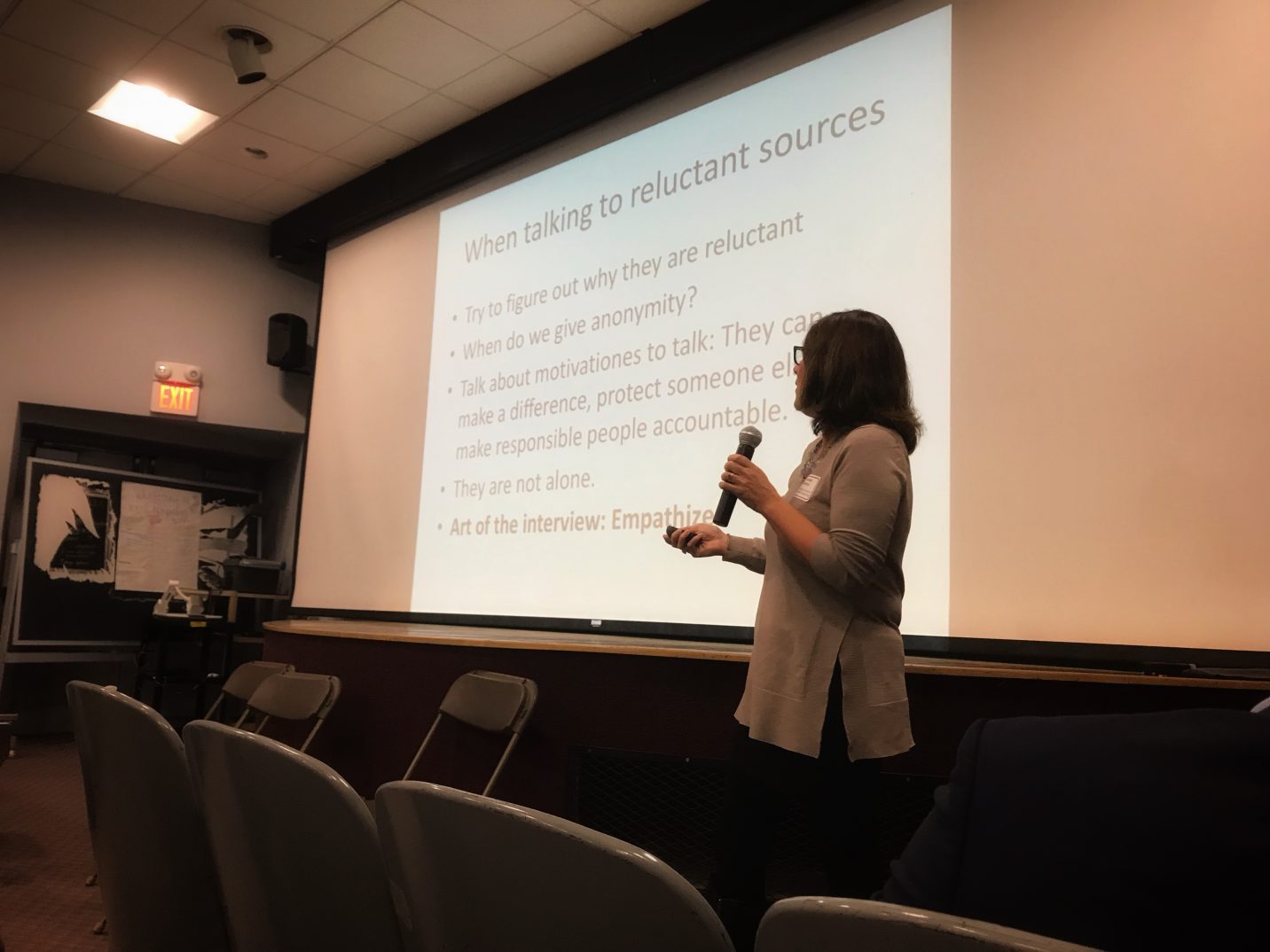Takeaways on being a watchdog reporter from the 2018 Boston Watchdog Workshop
“We found new and fresh ways to look at an issue that many people had covered before, by not only gathering a lot of data that was already out there, but also presenting them in a way that wasn’t done before.” That’s Nicole Dungca, an investigative reporter from The Boston Globe’s Spotlight team, at the Boston Watchdog Workshop held at Boston University last weekend.
Dungca was referring to the team’s seven-part series on racism in Boston, which was named a 2018 finalist for the Pulitzer Prize in the local reporting category. What made the series stand out from other coverage on racism was its unique approach to tackling the story by implementing data such as education, home mortgage data and census statistics.
Part of being a watchdog, Dungca said, is to mine those datasets to find interesting ways to tell stories that are also impactful at the same time. At the workshop, speakers from Investigative Reporters & Editors (IRE) offered tips to improve one’s “watchdog function” when it comes to data.
Reporters, students and professors walked away from the workshop with valuable tips that will no doubt add depth to their investigative work. Here are a few.
Have a watchdog mindset
“Always doubt the obvious.”
Before you start any project, you need to develop a certain modus operandi. To be a watchdog, you must first perform precise data analysis. Second, you should be distrustful, whether of the datasets you find or of something you heard from others. Always doubt the obvious. Third, find stories that are impactful. And don’t forget to go beyond human sources.
Sniff out where relevant data lies
Keep an eye on Freedom of Information Act (FOIA) libraries. Look for open data portals and public data sources. Talk to topic experts, such as researchers, lawyers, advocacy groups and IT database experts. Look for ways to combine datasets. If none of the above works, make the data yourself. You can create your own surveys or measure any data with appropriate equipment.
Getting data
You should always try to get the raw data, because data processed by others can drop important information. To get data from the internet, there are tools you can use such as the Internet Archive plug-in and the data scraper Chrome plug-in. There are several third-party tools, such as All My Tweets and IFTTT, to allow you to get data from social media.
Get into FOIAing
Requesting records from a government agency can be an arduous process, so you need to be serious about your request. Ask advocacy groups, lawyers and other journalists. Look at MuckRock for ideas. Use letterhead from your news organization. And don’t forget to involve a lawyer and/or cite the law.
After you submit the request, keep following up. Check its status regularly. Keep sending emails and making calls. These agencies know reporters are busy, and they sometimes hope that we just forget and move onto the next story. Don’t let that happen. As Todd Wallack, an investigative and data reporter from the Spotlight team said, “I am polite about my requests, but I am always persistent.”
Form relationships with others
Try to find allies. Those can be other reporters who are willing to team up or people who know more than you do. When it comes to convincing your editors, you should approach them with a small version of the story and then develop a track record with them. That way, you bring them along for the ride.
Learn to analyze data
If you are unsure about your data analysis, explain the process to your editors and ask for their thoughts. Send your analysis to any relevant companies or groups to see if they can match it. Analyze it with at least two different tools to see if results align.
Hoarding data
It’s always important to hoard your data. You never know when they will be useful for your next story.
Photo: Jenifer McKim presents. Credit: Sarah Hutchins.
- What I learned applying data science to U.S. redistricting - January 20, 2020
- How to build a heatmap in Python - February 18, 2019
- The future of machine learning in journalism - January 2, 2019





